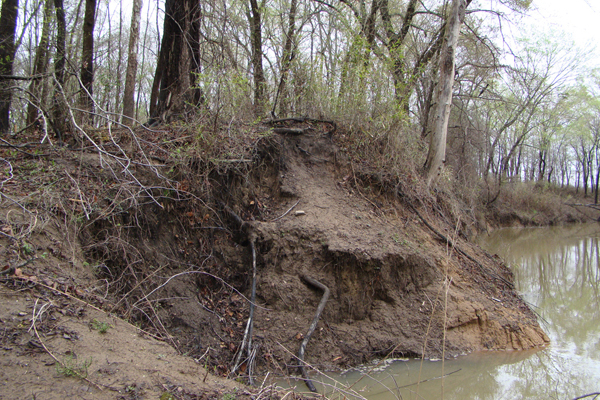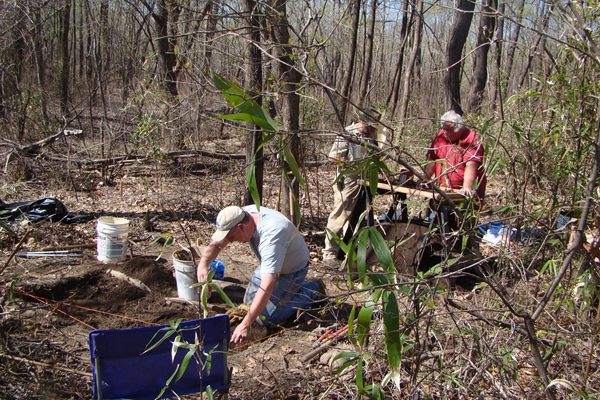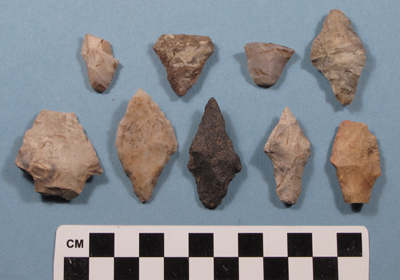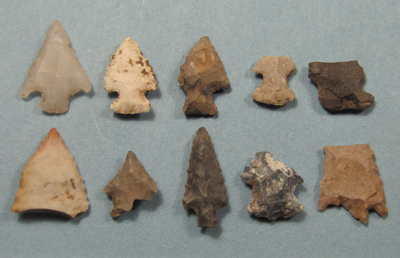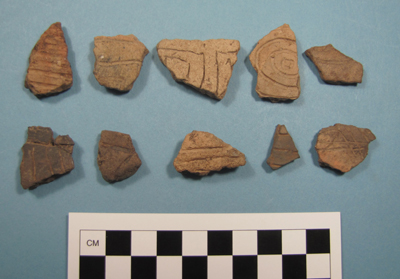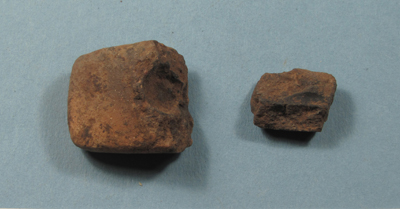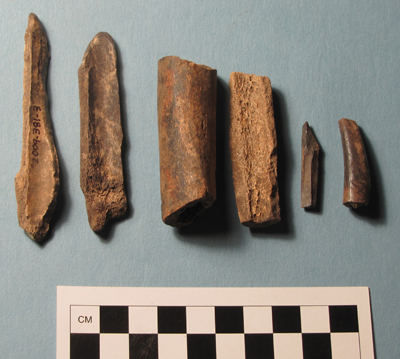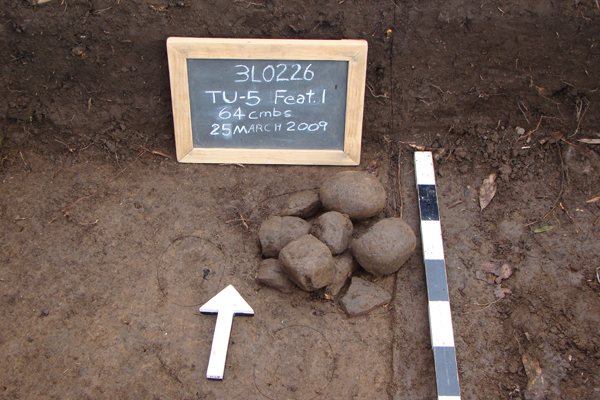Test Excavations at 3LO226
WRI Research Station Arkansas Archeological Survey 3LO226 is a well preserved Woodland Period site in southern Logan County, Arkansas. Its location only a short distance upstream from a U.S. Army Corps of Engineers flood control reservoir makes the site subject to frequent, and often severe, inundation. After the unprecedented flooding of 2008 which greatly accelerated the already severe erosion of the site, it was determined that salvage excavations were in order. In March of 2009, The Arkansas Archeological Survey conducted excavations along the edge of the creek bank where the most drastic erosion was occurring. We excavated three test units and recovered a large amount of data on Woodland Period culture in an area where very little such work has ever been done.
Larry Porter, station assistant at the WRI Research Station, began working with the U.S. Army Corps of Engineers, on whose property the site is located, in January of 2009 to obtain a permit to do test excavations. In the ensuing weeks an excavation plan was devised, units were laid out and logistical arrangements were made. On 12 consecutive days beginning in mid-March, we excavated three 2 X 2 meter units dug to subsoil.
We recovered a significant amount of data, most of which related to the Woodland period occupation at the site. Included were several features, two of which yielded the only two radiocarbon samples collected. An apparently intact burial was encountered at the bottom of one of the units. By prior agreement the burial was left in place and the unit backfilled. The excavated artifact assemblage includes several well-made Gary projectile points, and a number of small arrow points.
Ceramic artifacts include Williams Plain ceramic sherds, several decorated sherds, and fragments of a modified platform Poole type clay pipe.
We also found quartz crystal fragments, lithic debris, charred nut shells, mussel shells, and an exceptionally well preserved faunal sample that includes several bone tools and evidence of bone tool manufacture.
As a result of the data collected, two specialized analyses have been undertaken. A grant funded by the Arkansas Archeological Society’s Archeological Research Fund paid for two AMS dates on charcoal collected from two adjacent features. The samples, both collected from the very bottom of the deposits, produced dates surprisingly early in light of the presence of arrow points, considered to mark the later end of the long Woodland period, found in the upper levels of the excavations. The two samples returned very consistent dates of 1000-820 BC. Materials at the bottom of the deposits thus date to the very earliest end of the Woodland period. This could be an indication that the site was occupied, either continuously or intermittently, throughout most of the Woodland sequence.
The second specialized analysis, funded by the Arkansas Archeological Survey, is a faunal analysis of the large bone sample. This analysis is currently underway and the results have not yet been received but it is anticipated that they will shed additional light on the faunal resources being utilized at this site.
Taken as a whole, the assemblage from 3LO226 demonstrates a potential to provide insight into the early Woodland period occupation in an area that has received so very little archeological attention. This project was a cooperative effort of the Arkansas Archeological Survey, the U. S. Army Corps of Engineers, the Caddo Nation, and all of the many volunteers who helped. Without doubt, not a tenth of the amount of work accomplished could have been done without the assistance of the many volunteers from which the archeological community of Arkansas is fortunate to be able to draw. Meanwhile, the erosion of the site continues unabated and always will. But a significant amount of data has now been recovered and plans are in the works for additional future excavations. At the very least the WRI Research Station will continue a program of monitoring and data collection. |
||||||||||||||||
 |

|
